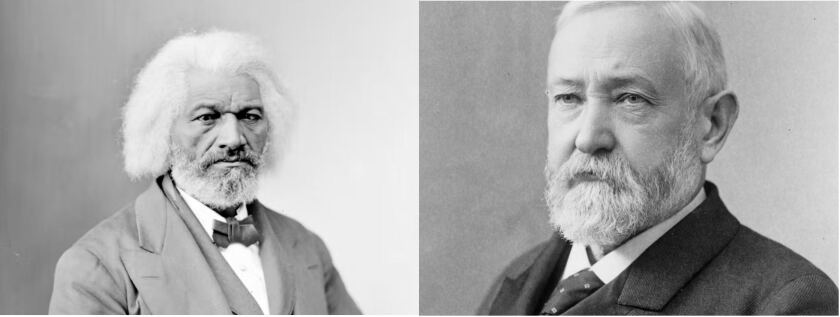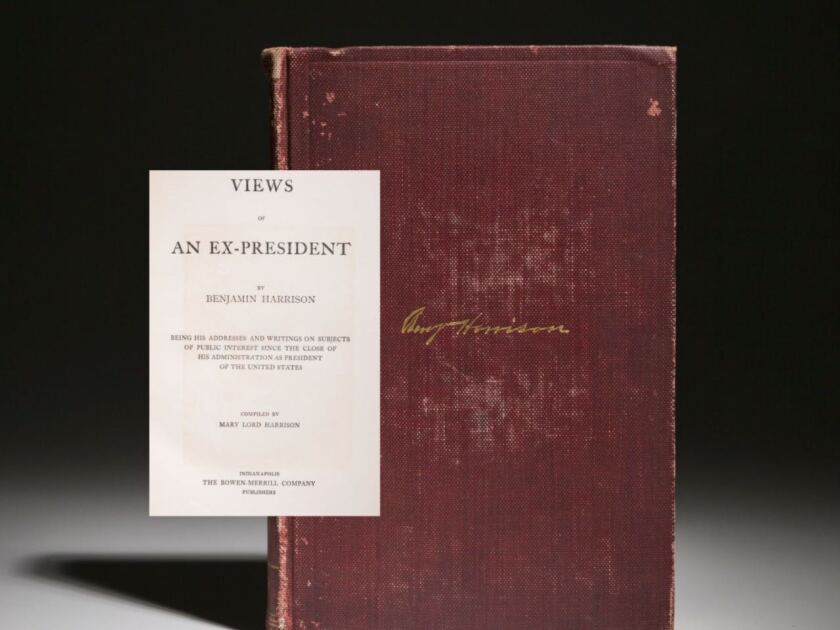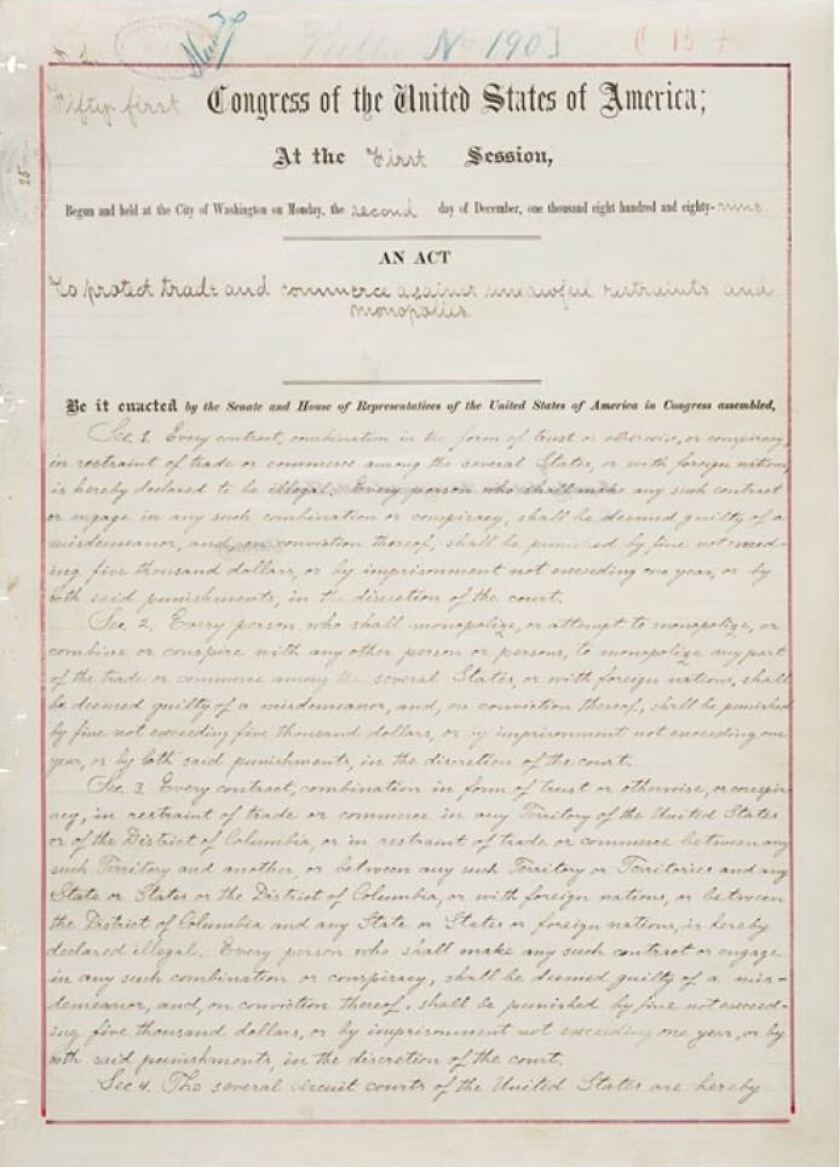Editor’s Note: This is another in an occasional series of articles Governing is publishing this year by Clay Jenkinson on some of the less well-known presidents of the United States.
It would be tempting to regard historically forgotten Benjamin Harrison (1833-1901) as one of the caretaker — as opposed to change maker — presidents, but that would be unfair. He was actually quite consequential, especially for a one-term president. He has a far better than average civil rights record.

A Cold Fish Precursor to the Larger-Than-Life TR

Harrison was granted only a single term. He served from 1889-1893, sandwiched (if that is not an unfortunate metaphor) between the two nonconsecutive terms of Grover Cleveland. The Depression of 1893, at the time the severest economic setback in American history, came on his watch. That’s enough to limit any presidency to a single term. Just ask Herbert Hoover.
Harrison’s emotional detachment made him blind to the desperate plight of the underclass. Jacob Riis’ groundbreaking photobook, How the Other Half Lives, published in 1890, changed Theodore Roosevelt’s life, but it had no apparent impact on Harrison. As president, Harrison presided over America’s first billion-dollar annual budget. Out in the heartland, where the Populist Movement was roiling toward William Jennings Bryan and the Cross of Gold, Harrison’s administration was criticized for lavish spending. That, too, contributed to his early retirement.
Family Matters
Harrison came from an illustrious American line. He was the grandson of William Henry Harrison (Old Tippecanoe), and the great grandson of Benjamin Harrison V, one of the 56 signers of the Declaration of Independence. The sense one gets in reading about Benjamin Harrison is that he regarded himself as American secular royalty and that he had plenty of noblesse but not much oblige. He was punctilious in every way, stiff, condescending, detached and obsessed with form. He was a deeply devout Presbyterian Christian, sufficiently high-principled to annoy most of his contemporaries, including the men of his own party. For example, he ordered the Indian trade to cease selling playing cards on the reservations, not wanting to encourage gambling among Indigenous populations.
It may be only a slight exaggeration to say that Harrison insisted upon three criteria for cabinet appointments in his administration: Civil War service, membership in the Presbyterian Church and Indiana citizenship. He was the first and (so far) only American president from Indiana, though he was born in Ohio.
Anticipating the Rough Rider

In 1889, Harrison had the good sense to appoint young, boundlessly ambitious Roosevelt to serve on the U.S. Civil Service Commission, a dullsville office which somehow TR managed to turn into a PR bonanza for himself. Harrison was somewhat reluctant to appoint the pugnacious and hyperactive Roosevelt, who, he quipped, wanted to solve all the problems of the world between 8 a.m. and 5 p.m. Roosevelt, for his part, told his friends he wished the president were a little less “colorless.”
Harrison advocated a larger role for the U.S. in the world’s arena; supported the annexation of Hawaii, though it was left to his successors to consummate the deal; established America’s first overseas protectorate — in Samoa; and advocated the construction of an isthmian canal somewhere in Central America. Sound familiar? A decade later, Theodore Roosevelt became the embodiment of those policies, but it was Harrison who paved the way.
Harrison and the West
As a good North Dakotan, I suppose I should feel grateful to President Harrison, because it was he who signed the congressional legislation bringing the Dakotas, Montana and Washington into the union in November 1889. Moreover, he had the tact to shuffle the paperwork for the two Dakotas so that neither would be able to proclaim that he favored one over the other. Idaho and Wyoming also became states during his administration.
Although Roosevelt was America’s greatest conservation president, Benjamin Harrison belongs somewhere in the top five. He helped to create three new national parks — Yosemite, Sequoia and General Grant, which was folded into Kings Canyon National Park in 1940. This was at a time when there was no National Park System, nor even the idea (“America’s best idea,” says Ken Burns) that the United States would create a wide portfolio of national parks.

The president attempted to persuade Congress to make the Grand Canyon a national park. Congress balked. But when Theodore Roosevelt came to power (1901-1909), and faced the same barriers in Congress, he designated the Grand Canyon as a national monument instead, at 828,000 acres. This was only approximately 800,000 more acres than the National Monuments and Antiquities Act intended for such parcels! Full national park status came to the Grand Canyon in Woodrow Wilson’s administration (Feb. 26, 1919).
Closing the “Century of Dishonor”
During Harrison’s administration, Native Americans continued to be pushed off of their ancestral homelands. Three weeks after taking office, Harrison signed a proclamation that opened 1,887,796 acres of Native American land in Oklahoma to white settlement. The Oklahoma stunt, sponsored by Illinois congressman William Springer, and signed into law by Harrison’s predecessor Grover Cleveland, precipitated what is now known as the Oklahoma “Land Run of 1889.” Harrison also forced the Lakota to cede 11 million acres in the Dakotas, and the Absaroka (Crow) to give up 1.8 million acres of land in Montana.
These orders cannot be disguised as anything other than a naked federal land grab. The Dawes Severalty Act of 1887 was designed to convert Native Americans into farm property owners like their white counterparts in the Midwest and Great Plains. Indian heads of household were encouraged to file for 160 acres, single individuals 80 acres, which would be held in trust by the government for 25 years. After all the Natives on the reservation had been given a lengthy period to sign up for their homesteads, whatever lands were not claimed by Natives or held in tribal trust would be thrown open to white settlement. These were conveniently and euphemistically called “surplus” lands. The result? Of the 150 million acres America’s Natives controlled in 1886, well more than half, 90 million acres, were taken by the U.S. government without prior consultation in the next several decades. When you look at an Indian reservation on a state or national highway map, it is important to remember that about half of the acreage in that colored zone is actually owned by non-Natives, thanks to the Dawes Act.
The nation’s “Indian Wars” came to a bloody conclusion on Dec. 29, 1890, at Wounded Knee on the Pine Ridge Indian Reservation in South Dakota. It’s a complicated story involving starvation conditions on the reservation, the millennial Ghost Dance phenomenon that freaked out white settlers, pusillanimous Indian agents, and, eventually, the U.S. military, including the political ambitions of Gen. Nelson Miles, and the bungled arrest of Sitting Bull (Dec. 15, 1890) during which the Lakota holy man was killed.
President Harrison doesn’t bear sole responsibility for what happened at Wounded Knee. And yet ... He appointed Thomas Jefferson Morgan as his commissioner of Indian affairs, a Baptist minister with no prior experience in Indian Country. Morgan was wholly ignorant of the history and cultural traditions of the nation’s quarter million Indigenous people. Like Harrison, Morgan believed that the answer to the “Indian Problem” was Christianity. Imagine how different things might have been had Harrison appointed a man with experience in Native American affairs and an understanding of their frustrations.
Meanwhile, when the Ghost Dance crisis reached his desk, Harrison listened to the advice of the U.S. military, and the panicky telegrams dashed off by the inept new Indian agent on the Pine Ridge Indian Reservation, Daniel Royer. Harrison directed the military to settle the problem. Before the crisis ended, fully a third of America’s Army troops were stationed in southwestern South Dakota, and the Wounded Knee Massacre — a needless bloodbath made dramatically more likely by the heavy military occupation of the Pine Ridge — left more than 200 Lakota men, women and children dead.
The Lakota holy man Black Elk (with a little help from the poet John Neihardt) provided the finest and saddest summation of the significance of the Wounded Knee Massacre:
I did not know then how much was ended. When I look back now from this high hill of my old age, I can still see the butchered women and children lying heaped and scattered all along the crooked gulch as plain as when I saw them with eyes still young. And I can see that something else died there in the bloody mud and was buried in the blizzard. A people's dream died there. It was a beautiful dream.
Clay welcomes your comments and critiques of his essays and interviews. You can reach him directly by writing cjenkinson@governing.com or tweeting @ClayJenkinson.












